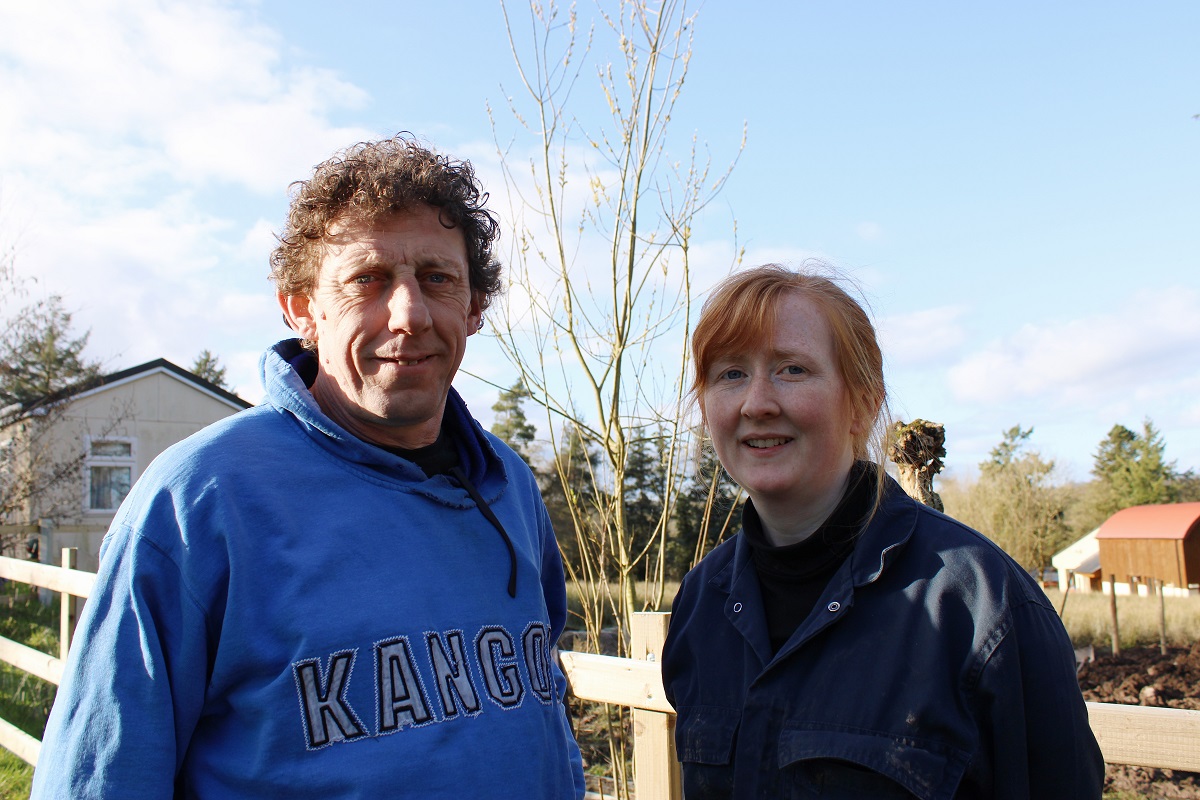Tyrone is a county known for its rich farming history. Generations of farming families wear their rural, agricultural roots like a badge of honour and pride – respecting the traditions and methods of ancestors who farmed the land long before them.
With this idyllic view of the local agricultural sector in mind, it may be surprising to hear that Tyrone was recently named the eighth-worst county in the UK for the large numbers of animals confined indoors or without access to pasture in so-called ‘factory’ farms.
According to figures released from animal welfare organisation, Compassion in World Farming (CIWF), animals being reared in indoor systems in Tyrone include more than eight million meat chickens, 604,500 egg hens, 100,000 other poultry (ducks) and 25,900 pigs.
The campaign group has warned that the rise of this intensive farming model has meant that animals can spend their lives in barren barns or cages, suffering from overcrowding, often lacking access to fresh air and natural light.
With ‘factory’ farming processes enabling the production of ‘cheap’ meat, CIWF has claimed this has led to overconsumption of red and processed meats in many developed countries, linked to a number of serious health-related conditions, such as heart disease and diabetes.
Campaigners further believe that the current agricultural system is driving climate change, impacting on nature and is the main cause of river pollution.
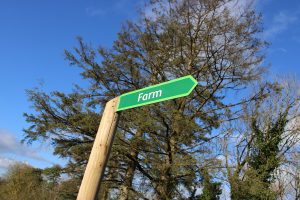
DIFFERENT
But one local farm taking a radically-different approach to this intensive model is located in the townland of Clanabogan, several miles outside Omagh.
Focusing on a healthy, sustainable food and farming system, the Camphill Community is home to 80 residents with learning difficulties.
It is not only a warm and nurturing environment for its residents, but also for the animals who call the biodynamic farm and organic garden their home. The innovative farm, which has roots in the area since 1984, is currently managed by Seamus McCrossan, a former chef from Strabane.
Mr McCrossan, who has worked at Camphill for the last seven years, admitted that they had “quite a unique way” of farming.
“We have pedigree Shorthorn cows and we’re milking 16 of those all for internal use for the 80 people that live here. They’re not a huge yielding breed but the quality of their milk is very high – high in protein and butter fat. We pasteurize our own milk and when we have enough milk we would often make butter, cheese – even yogurt,” Seamus said.
Cows line each side of the barn at Camphill. On the left are the milking cows, while to the right are a mixture of replacement heifers and beef cattle.
Seamus said, “Again, we rear all our own beef, just for internal consumption – there is 80 people to be fed here every week so we consume quite a bit internally.”
The cows graze on barn-dried hay.
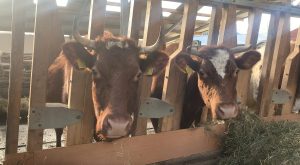
‘ETHICAL’
The farm manager said, “The quicker you can dry hay the more nutrients you’re saving. Then we’ve a drying system in the barn where we can blow air up through the hay.
“So we bring the hay in almost dry from the field and then finish it off in the drying system. We have had it tested and it is a lot higher in nutrient value than the likes of round bale silage.
“We are trying to be ethical, sustainable and it is a bio-dynamic farm so we have done away with all the plastic from the round bale silage, plus we don’t have the run off the effluent from the round bales – It is just a greener way of doing it.”
Seamus admitted there was a cost to drying the hay in the barn before adding that wrapping bales was costly as well.
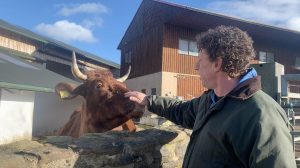
The drying system is the only one of its kind on the island, according to the farm manager.
Seamus said the farm was as much about providing a meaningful work life for the adults with learning difficulties who live at Camphill as it was about trying to be sustainable and producing their own food.
“We are also putting solar panels on the entire length of the shed so hopefully that will provide enough electricity to run the entire hay drying system and have surplus to use for energy consumption in the houses below.”
Seamus is hopeful that these panels will be erected later this year.
Focusing on the farm’s milking parlour, the farm manager said their oldest cow was 13 and still ‘performing well’.
He said, “On a conventional farm you would be lucky to have a cow that’s five or older because they are just forced so much early on for maximum yield that they don’t last that long.”
At Camphill they also keep their own pigs, and have recently set up facilities for free-range chickens to provide eggs for the community living there. The site also boasts two large greenhouses and external vegetable crops, to grow organic fruit and vegetables for the residents.
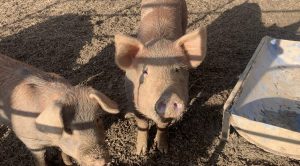
‘EXTRA STEP’
Seamus summarised, “It’s a biodynamic farm which takes organic an extra step further. We feed back to the land in a self-sustaining cyclic system without a need to bring in external products.
“We don’t use fertilizer; we use all our own manure and grow nitrogen fixing crops like lupines and clover in order to feed back to the ground to keep it sustaining itself.”
Another member of the staff at Camphill, Una Brogan, voiced her worry at the quantities of animals being ‘factory farmed’ in Great Britain and Ireland.
“It’s worrying to hear that eight million animals are being farmed in Tyrone at a time where we should be trying to move toward a model that’s a lot more small scale and focused on local production,” she began.
“We are actually destroying our local ecosystems by this kind of intensive farming.”
“There are huge environmental costs to intensive farming. You’re going to have a lot of off-run of nitrates that’s going into the water courses and polluting them.
“It’s also causing problems like we saw last summer in Lough Neagh which are really detrimental to biodiversity and wildlife.
“I think we can move towards smaller-scale farming if there is a mindset change away from profit towards thinking of doing things on a more human scale and a more environmentally-friendly scale – a way that’s friendlier to animals as well.
“There should be support for people who wish to move toward those kinds of models and I really hope it’s something that we will see happening.”






